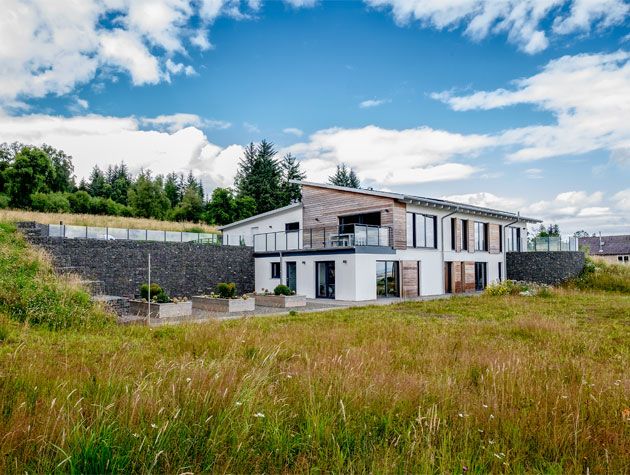The Advantages of Building British – with German Engineering
Hans Haus show self-builders hyper-efficient ways to build their future proof dream home with prefabs.
Prefabs’ have come a long way from flimsy, quick fix housing and are now offering self-builders a hyper-efficient way to build their future proof dream homes.
This an advertorial

Image: Hanse Haus
German engineering is synonymous with quality, reliability and expert craftsmanship. Think BMW, Mercedes-Benz and Porsche; they’re all prized for their advanced technology and construction, achieved in part by their focus on first-rate education, but also their thirst for perfection, pride and excellence.
German houses are engineered with this ethos. Engineers and craftsmen strive to create a home that is sustainable, energy efficient and technologically advanced, which not only saves on running costs, but also protects your health – and the planet.
The British however, are the trendsetters. They’re known worldwide in the creative industries, in fashion, architecture and media. The marriage of British design elegance with the reliability of German engineering therefore, is a match made in heaven. Here’s why:
Quality – Guaranteed

Image: Hanse Haus
The Germans apply common sense to houses with a simple rule of thumb; houses are like people. In order to stay warm in cold weather they need a warm coat, and a waterproof hat and boots to keep occupants dry. Using this straightforward analogy or ‘fabric first approach’, high-standard building materials and precision fabrication come together to create a super-efficient, highly-insulated, airtight shell. By doing so, the interior environment is temperate, clean and healthy. This guarantees a home that stays warm and draught-free in winter and cool in the summer.
With the development of quality-driven offsite-construction housing in Germany and The Nordics, for the first time, the export market for such homes can be enjoyed Europe-wide.
Every element of a German pre-manufactured home is created in perfect factory conditions, dramatically reducing British weather-related struggles associated with traditional brick and block on-site construction. Within a factory setting, homes are built at greater speed and to higher engineering standards – every detail is crafted with pinpoint precision.
All of this comes together into a home which to heat, requires a quarter (or less) of the energy requirement than a typical British build.











